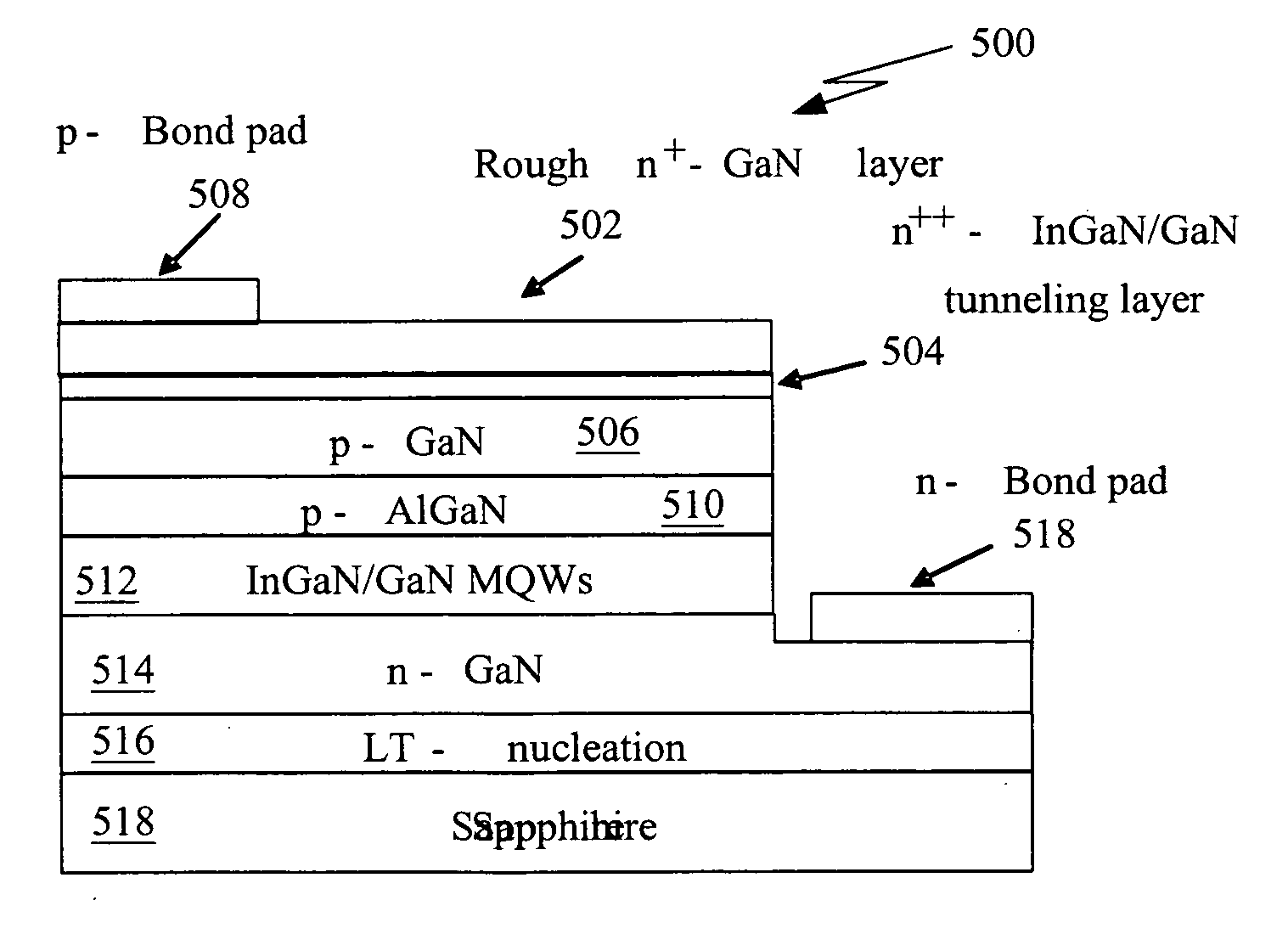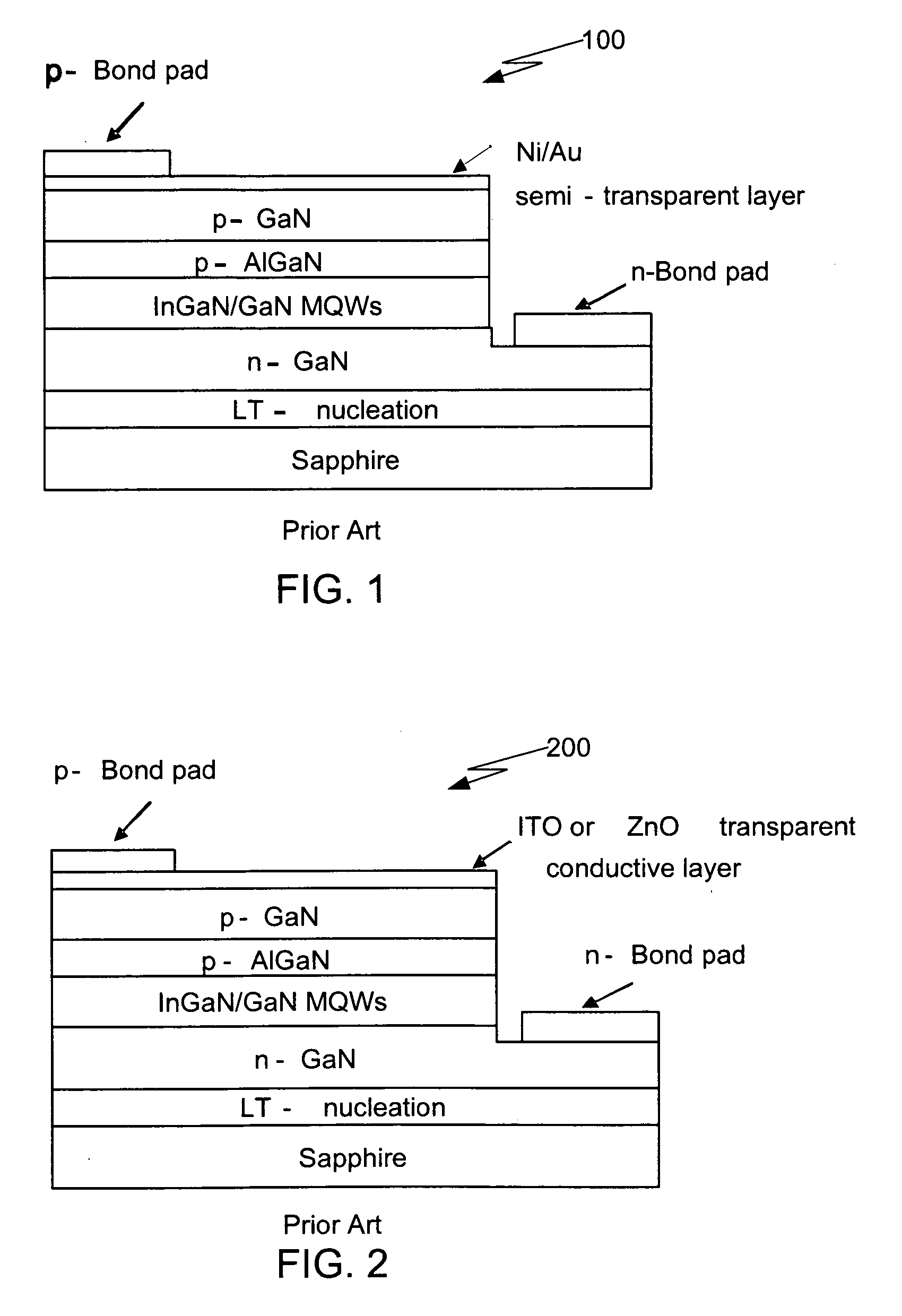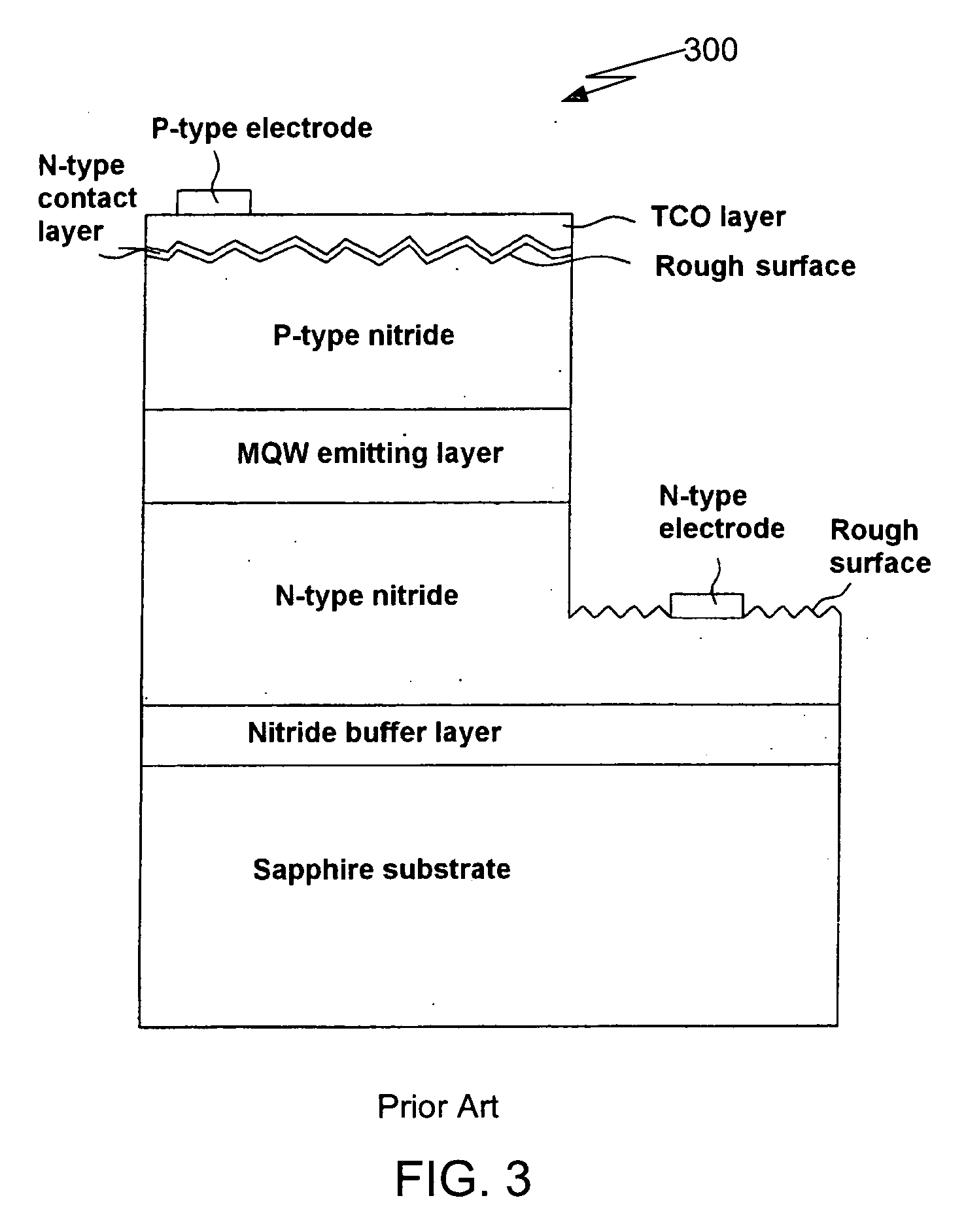High efficiency light emitting device
- Summary
- Abstract
- Description
- Claims
- Application Information
AI Technical Summary
Benefits of technology
Problems solved by technology
Method used
Image
Examples
Embodiment Construction
[0035] In the following description of the preferred implementation, reference is made to the accompanying drawings that form a part hereof, and in which is shown by way of illustration a specific implementation in which the invention may be practiced. It is to be understood that other implementations may be utilized and structural changes may be made without departing from the scope of the present invention.
[0036] The present implementation reveals a high efficiency III-Nitride LED. Compared with the conventional LED, an additional n+-GaN layer and an n++-tunneling layer directly grown on top of the p-Ga(Al, In)N surface are utilized to improve both current spreading and light extraction of a high efficiency III-Nitride LED. This high efficiency III-Nitride LED has demonstrated significant improvement in light output, 70% more than conventional LEDs, or 30% more than the prior-art LEDs. The manufacture of the high efficiency III-Nitride LED is by a simplified process as compared t...
PUM
 Login to View More
Login to View More Abstract
Description
Claims
Application Information
 Login to View More
Login to View More - R&D
- Intellectual Property
- Life Sciences
- Materials
- Tech Scout
- Unparalleled Data Quality
- Higher Quality Content
- 60% Fewer Hallucinations
Browse by: Latest US Patents, China's latest patents, Technical Efficacy Thesaurus, Application Domain, Technology Topic, Popular Technical Reports.
© 2025 PatSnap. All rights reserved.Legal|Privacy policy|Modern Slavery Act Transparency Statement|Sitemap|About US| Contact US: help@patsnap.com



